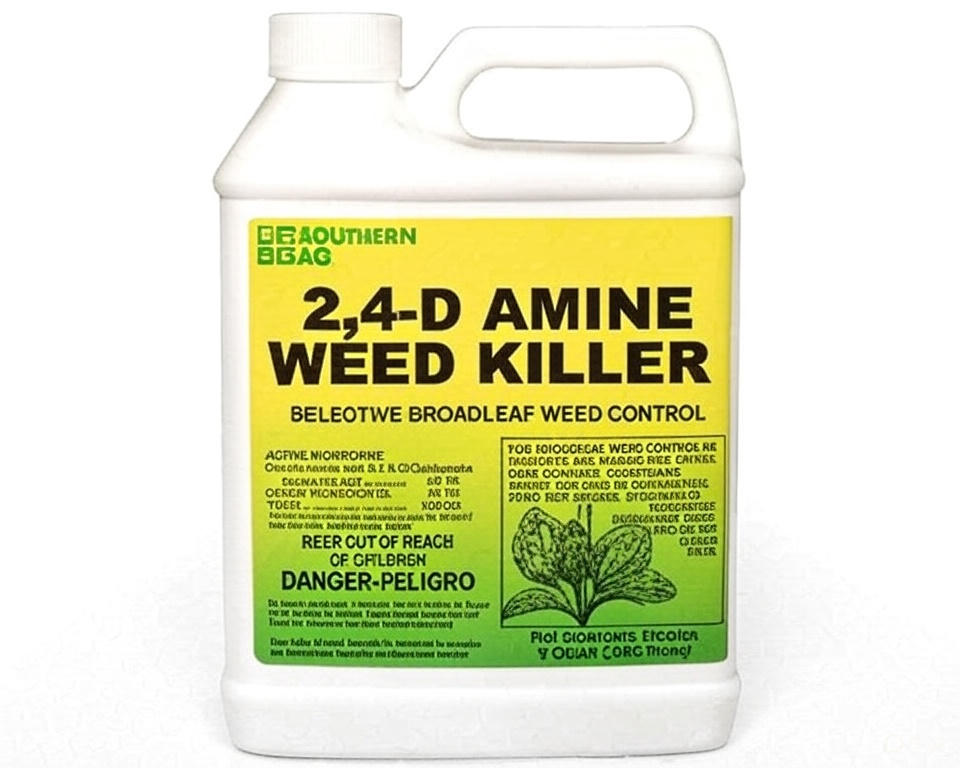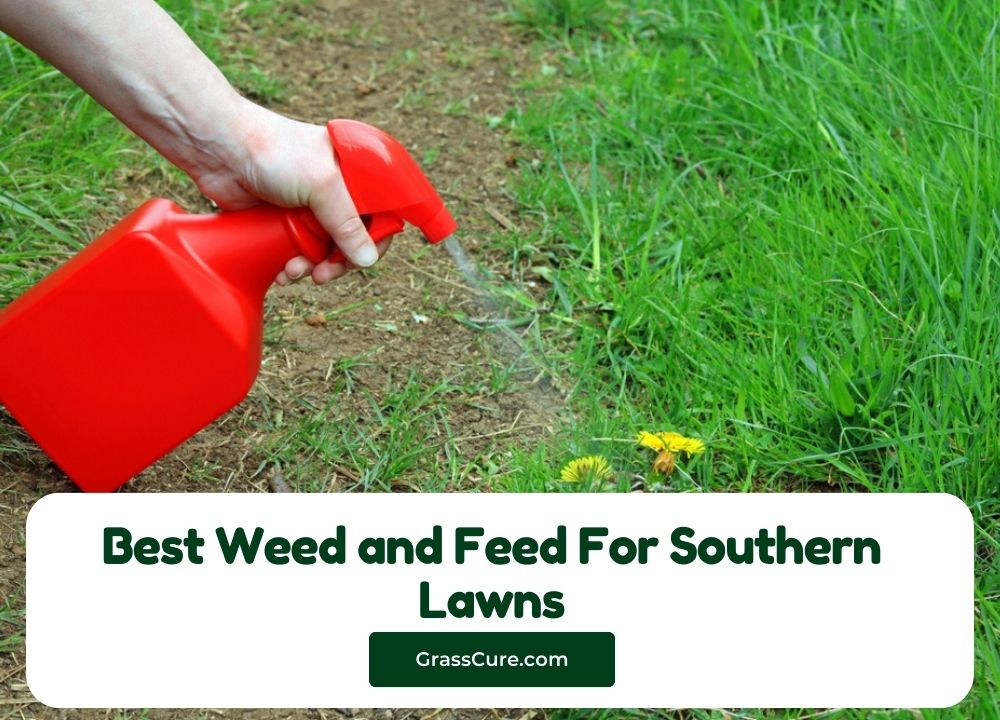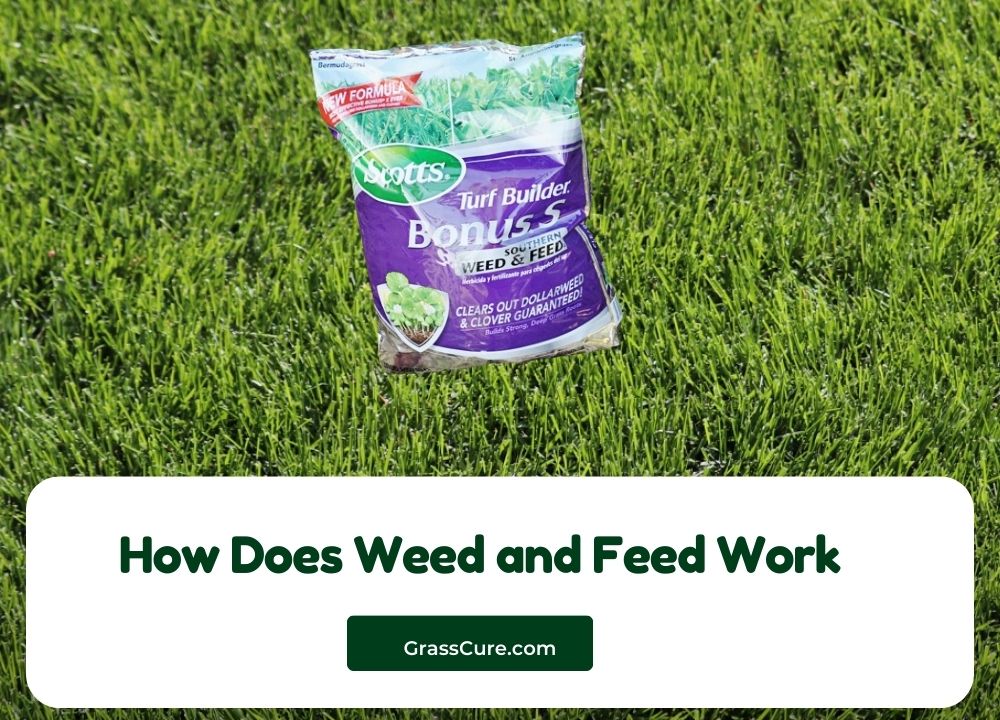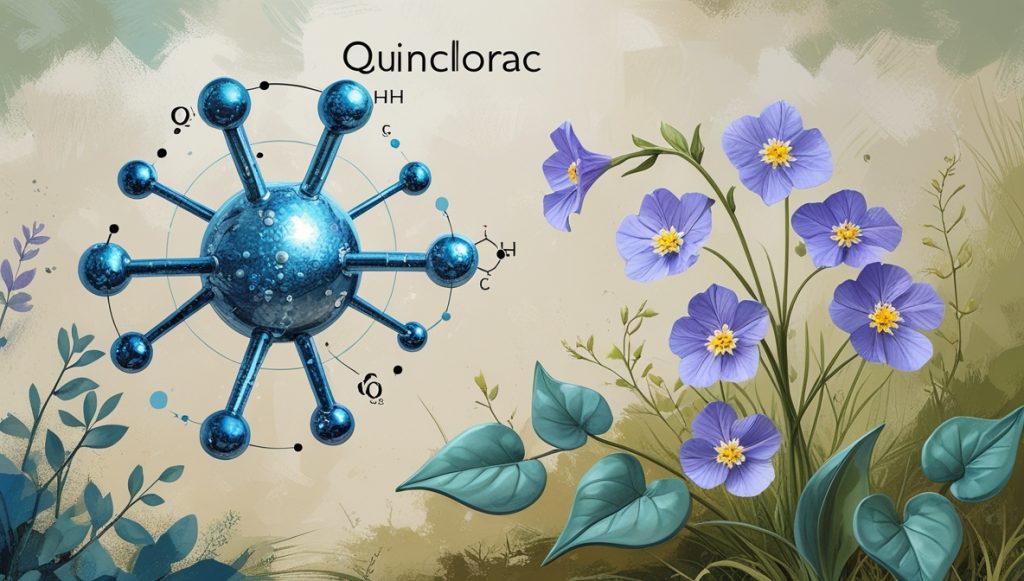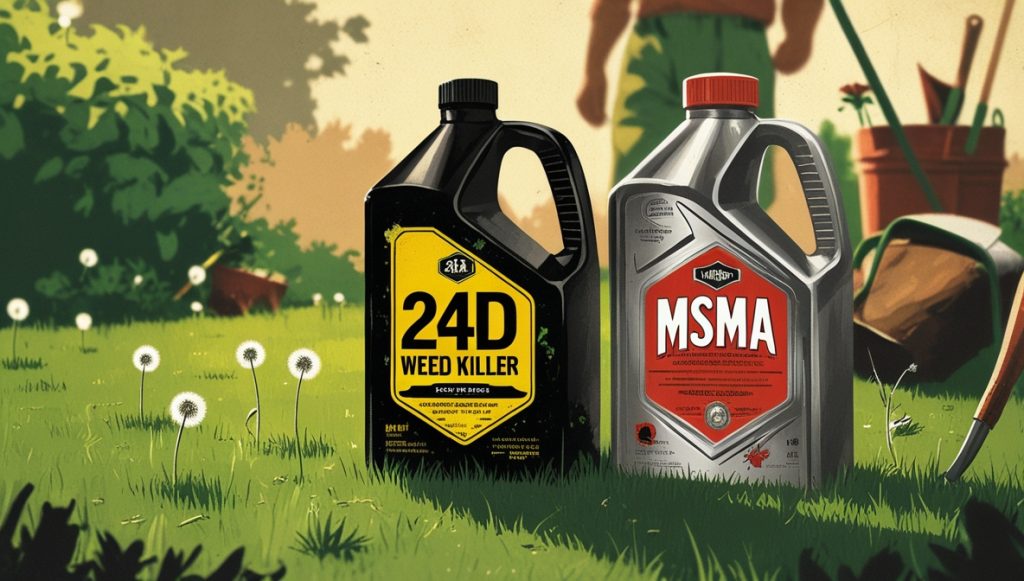Broadleaf weeds can quickly transform a pristine lawn into an unsightly patchwork of dandelions, clover, and other invasive plants. Professional landscapers and homeowners alike have relied on 2,4-D herbicides for decades to tackle these persistent problems. This comprehensive review examines the top three 2,4-D weed killers available today, providing detailed insights to help you make an informed decision for your specific needs.
Contents
- The Science Behind 2,4-D Herbicides
- Top 3 Best 2,4-D Weed Killers Reviewed
- Application Best Practices for Maximum Effectiveness
- Comparing Active Ingredients and Formulations
- Cost-Effectiveness Analysis
- Environmental Considerations and Responsible Use
- Seasonal Application Strategies
- Resistance Management and Integrated Approaches
- Storage and Handling Requirements
- Professional vs. Homeowner Applications
- Troubleshooting Common Application Issues
- Economic Impact and Long-Term Value
- Final Recommendations and Conclusion
The Science Behind 2,4-D Herbicides
2,4-Dichlorophenoxyacetic acid, commonly known as 2,4-D, represents one of the most widely used selective herbicides in modern agriculture and lawn care. This synthetic auxin works by disrupting the natural growth hormones in broadleaf plants, causing them to grow uncontrollably until they exhaust their energy reserves and die. The beauty of 2,4-D lies in its selectivity – it targets broadleaf weeds while leaving grass species largely unharmed.
The effectiveness of 2,4-D stems from its ability to mimic plant growth hormones called auxins. When applied to susceptible plants, the herbicide triggers rapid, uncontrolled cell division and elongation. This process causes the plant to use up its stored energy reserves, leading to wilting, yellowing, and eventual death. Most grasses possess natural resistance to 2,4-D, making it an ideal choice for lawn applications.
Post-emergent herbicides like 2,4-D work best when applied to actively growing weeds during warm weather conditions. The herbicide absorbs through both leaves and roots, providing systemic control that reaches all parts of the plant. This comprehensive action ensures that even weeds with extensive root systems receive a lethal dose of the active ingredient.
Top 3 Best 2,4-D Weed Killers Reviewed
1. Southern Ag Amine 2,4-D Weed Killer (32oz Quart)
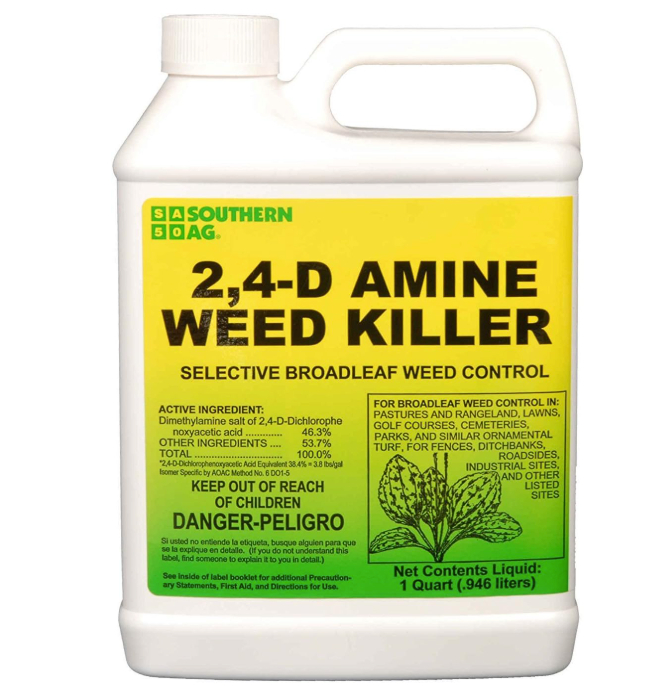
Southern Ag has built a reputation for producing reliable agricultural products, and their Amine 2,4-D Weed Killer continues this tradition. This 32-ounce concentrate delivers professional-grade performance at a fraction of the cost of commercial applications.
Key Features and Benefits:
The Southern Ag formulation contains 3.8 pounds of active ingredient per gallon, providing excellent concentration for effective weed control. This post-emergent herbicide is suitable for use in various areas, including turf, pastures, rangeland, ditch banks, and fences. The versatility of this product makes it suitable for both residential and commercial applications.
Application and Coverage:
For southern grasses, apply 1 to 1+ oz. per gallon to cover 400 sq. ft. area. For northern grasses, apply 1+ oz. per gallon to cover 400 sq. ft. area. This economical dilution ratio means a single quart can treat substantial areas when properly mixed. The product works effectively on both warm-season and cool-season grasses, though application rates may vary slightly based on grass type and target weeds.
Target Weeds and Effectiveness:
Southern Ag 2,4-D Amine is recommended for numerous broadleaf weeds and certain 2,4-D susceptible woody plants without injury to most established grasses. The herbicide effectively controls dandelions, plantain, chickweed, clover, and many other common lawn weeds. Results become visible within 24-48 hours of application, with complete control typically achieved within 7-14 days.
Pros:
- Economical concentrate formula
- Suitable for multiple grass types
- Fast-acting results
- Versatile application options
- Professional-grade concentration
Cons:
- Requires careful mixing
- Strong odor during application
- Limited to post-emergent control only
- Weather-dependent effectiveness
2. Hi-Yield 2,4-D Selective Weed Killer (1 Gallon)
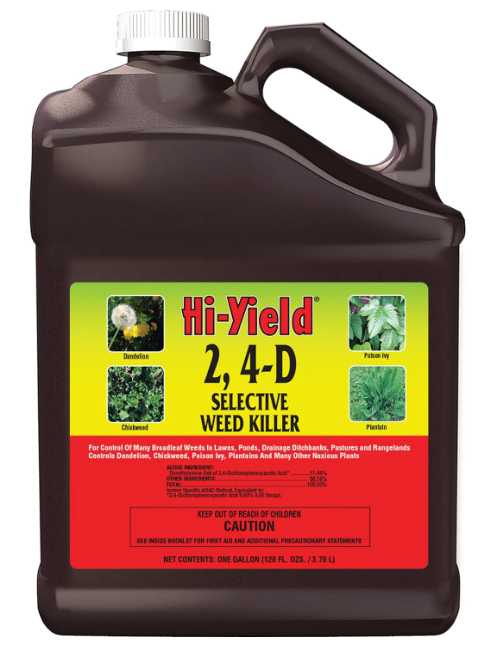
Hi-Yield’s gallon-sized container provides excellent value for larger properties or multiple applications. This selective herbicide has earned praise from users for its consistent performance and reliable results.
Formulation and Strength:
The Hi-Yield formulation delivers reliable broadleaf weed control with a proven track record. Customers find the weed killer effective at killing weeds and clover without harming grass, and appreciate its speed, with one customer noting results within 24 hours. The product’s reputation for rapid action makes it particularly appealing for homeowners seeking quick results.
Application Guidelines:
In established pastures, rangelands, ornamental turf, and non-crop areas, use 1 gallon of Hi-Yield 2,4-D Selective Weed Killer in 15 gallons of water per acre. For smaller areas, the mixing ratio scales down proportionally, making it suitable for both large-scale and targeted applications.
Weed Control Spectrum:
This product will kill or control many Broadleaf Weeds in addition to many other noxious plants susceptible to 2, 4-D. For Control Of Many Broadleaf Weeds In Lawns, Ponds, Drainage Ditchbanks, Pastures and Rangelands. The extensive list of controlled weeds includes common lawn pests like dandelions, dock, bindweed, and various thistle species.
Durability and Value:
The product offers good value and durability, with one customer mentioning it lasts for several seasons. The larger container size provides excellent value for property owners with extensive weed control needs or those who prefer to stock up on proven products.
Pros:
- Large container size for value
- Rapid 24-hour results
- Extensive weed control spectrum
- Long shelf life
- Proven customer satisfaction
Cons:
- Requires proper storage space
- May be too much product for small lawns
- Higher upfront cost
- Needs careful handling due to concentrate strength
3. Winfield Shredder 2,4-D Amine 4 Herbicide (2.5 Gallon)
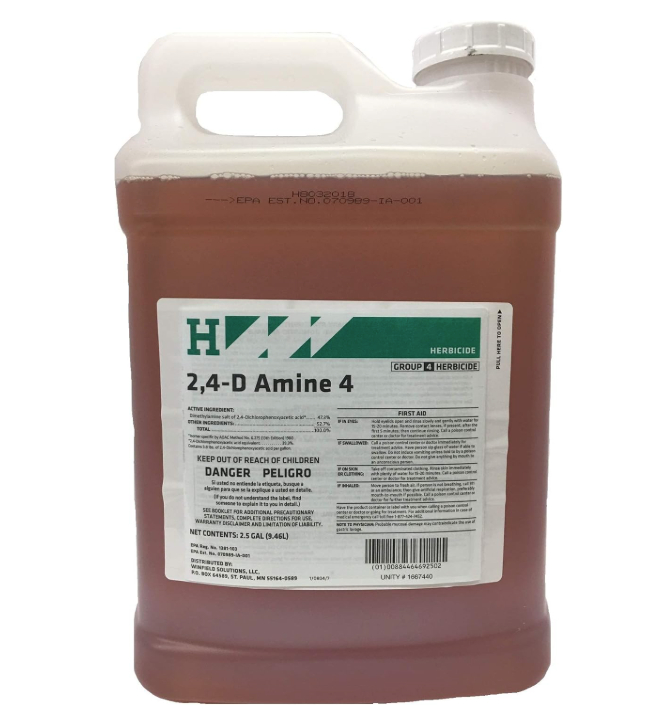
The Winfield Shredder represents the professional-grade option in our review, offering commercial-strength performance for demanding applications. This 2.5-gallon container provides serious weed control capacity for large properties or commercial use.
Professional-Grade Performance:
Shredder 2,4-D Amine Herbicide provides highly effective control of challenging weeds in a wide range of crops, including corn, CRP, fallow, grain sorghum, ornamental, pasture/rangeland, rice, small grains, soybean (preplant only), sugarcane, turf and more. This versatility makes it suitable for agricultural, commercial, and residential applications.
Commercial Applications:
2,4-D Amine Herbicide can be used in Ponds, Lakes, Reservoirs, Marshes, Bayous, Drainage Ditches, Canals, Rivers and Streams that are Quiescent or Slow Moving. The aquatic application capability sets this product apart from typical residential herbicides, making it valuable for property managers dealing with diverse weed control challenges.
Concentrate Strength:
The Shredder formulation delivers maximum active ingredient concentration, ensuring effective control even against resistant weed species. This strength makes it particularly effective for treating established weeds or areas with heavy infestations.
Pros:
- Professional-grade concentration
- Largest container size for value
- Aquatic application capability
- Effective against resistant weeds
- Suitable for commercial use
Cons:
- Requires commercial-grade mixing equipment
- Higher concentration demands careful handling
- May be excessive for typical residential use
- Limited availability in some regions
Application Best Practices for Maximum Effectiveness
Successful 2,4-D application requires attention to timing, weather conditions, and proper mixing procedures. The herbicide works most effectively when applied during periods of active plant growth, typically during warm weather when temperatures range between 65-85°F.
Timing Considerations:
Apply 2,4-D herbicides during the growing season when weeds are actively photosynthesizing and transporting nutrients. Spring and early fall applications often prove most effective, as weeds are actively growing and preparing for seasonal changes. Avoid applications during drought stress or when plants are dormant, as uptake and translocation will be reduced.
Weather Factors:
Wind conditions play a critical role in successful application. Apply herbicides only when wind speeds remain below 10 mph to prevent drift to desirable plants. Temperature inversions can also cause drift problems, so avoid applications during calm, cool evening conditions when inversions are likely to occur.
Mixing and Application:
Always add the herbicide concentrate to water rather than water to concentrate. This practice ensures proper mixing and reduces the risk of concentrate settling. Use clean water free from clay particles or high mineral content, as these can interfere with herbicide effectiveness.
Safety Precautions:
Wear appropriate protective equipment including long sleeves, long pants, chemical-resistant gloves, and eye protection. Avoid contact with skin and eyes, and never eat, drink, or smoke during application. Store herbicides in original containers away from children, pets, and food items.
Comparing Active Ingredients and Formulations
All three products contain 2,4-D as their primary active ingredient, but formulation differences affect their performance characteristics. The amine formulation used in these products provides excellent foliar uptake and translocation while minimizing volatility compared to ester formulations.
Concentration Levels:
Southern Ag delivers 3.8 pounds of active ingredient per gallon, providing standard concentration for residential applications. Hi-Yield offers similar concentration with proven performance, while Winfield Shredder provides professional-grade strength for challenging applications.
Formulation Benefits:
Amine formulations offer several advantages over ester alternatives. They produce less odor during application, show reduced volatility in hot weather, and provide more consistent performance across varying temperature conditions. The lower volatility reduces the risk of injury to sensitive plants located away from the application site.
Adjuvant Requirements:
No adjuvants necessary for the Winfield Shredder product, simplifying the mixing process. Most 2,4-D amine formulations perform well without additional surfactants, though adding a non-ionic surfactant can improve performance on hard-to-wet weed species.
Cost-Effectiveness Analysis
Evaluating the true cost of these herbicides requires considering both the initial purchase price and the coverage area achievable with each product. While larger containers typically offer better per-unit pricing, smaller containers may provide better value for occasional users.
Southern Ag Value Proposition:
The 32-ounce container provides excellent value for typical residential applications. With proper dilution, this size treats substantial areas while minimizing waste from unused product. The reasonable price point makes it accessible for budget-conscious homeowners.
Hi-Yield Economic Benefits:
The gallon container offers superior value for larger properties or multiple applications throughout the season. The cost per application drops significantly with this size, making it economical for serious lawn care enthusiasts or small commercial operators.
Winfield Commercial Efficiency:
The 2.5-gallon container provides the best per-unit pricing for high-volume users. Commercial applicators and large property owners benefit from the reduced packaging costs and fewer purchase transactions required.
Environmental Considerations and Responsible Use
2,4-D herbicides, when used according to label directions, pose minimal environmental risks. However, responsible application practices help protect non-target plants, wildlife, and water resources.
Water Quality Protection:
Avoid applications near water bodies unless specifically labeled for aquatic use. Maintain appropriate buffer zones to prevent contamination of streams, ponds, and groundwater. The Winfield Shredder product includes specific labeling for aquatic applications, making it suitable for water-adjacent treatments.
Non-Target Plant Protection:
Drift prevention protects desirable plants from accidental herbicide exposure. Use appropriate nozzles and application pressures to minimize drift potential. Shield sensitive plants during application and avoid treating areas where root uptake might affect nearby trees or shrubs.
Wildlife Considerations:
Allow treated areas to dry completely before allowing pets or wildlife access. While 2,4-D shows relatively low toxicity to mammals and birds, following label precautions protects all organisms in the treated environment.
Seasonal Application Strategies
Different seasons offer varying opportunities for effective weed control with 2,4-D herbicides. Understanding these seasonal patterns helps maximize treatment success while minimizing applications.
Spring Applications:
Early spring treatments target young, actively growing weeds before they establish extensive root systems. Cool-season weeds like dandelions and chickweed respond particularly well to spring applications. Wait until grass begins active growth to ensure selectivity.
Summer Treatments:
Hot summer weather can reduce herbicide effectiveness and increase volatility concerns. Apply during cooler morning hours and ensure adequate soil moisture for optimal weed uptake. Avoid treating stressed grass areas during extreme heat.
Fall Control Programs:
Fall applications target perennial weeds preparing for winter dormancy. Herbicides applied during this period move into root systems, providing excellent control of established perennials. Time applications before the first killing frost for maximum effectiveness.
Resistance Management and Integrated Approaches
Long-term weed control success requires integrated management approaches that combine herbicides with cultural practices. Relying solely on 2,4-D applications can lead to resistance development in weed populations.
Cultural Control Methods:
Maintain thick, healthy grass stands through proper fertilization, watering, and mowing practices. Dense grass naturally crowds out weeds and reduces the need for herbicide applications. Overseed thin areas to prevent weed establishment.
Rotation Strategies:
Rotate between different herbicide modes of action to prevent resistance development. Combine 2,4-D treatments with pre-emergent herbicides and other post-emergent products with different active ingredients.
Mechanical Control:
Hand-pulling or spot-treating individual weeds reduces herbicide use while maintaining control. This approach works particularly well for scattered weeds or sensitive areas where broadcast applications aren’t appropriate.
Storage and Handling Requirements
Proper storage extends product shelf life and maintains effectiveness while ensuring safety. All three products require similar storage conditions and handling procedures.
Storage Conditions:
Store herbicides in original containers in a cool, dry location away from direct sunlight. Avoid areas subject to freezing temperatures, which can damage liquid formulations. Keep containers tightly closed to prevent contamination and evaporation.
Shelf Life Considerations:
Insecticides and Herbicides do not have an expiration date, but proper storage maintains maximum effectiveness. Products stored under ideal conditions retain potency for several years, making larger containers practical for long-term use.
Disposal Requirements:
Follow local regulations for disposal of empty containers and unused product. Many agricultural retailers offer container recycling programs for large containers. Never pour herbicides down drains or dispose of them in regular trash.
Professional vs. Homeowner Applications
The choice between these products often depends on the scale and frequency of applications. Each product targets different user categories with specific needs and capabilities.
Homeowner Considerations:
Residential users typically benefit from smaller containers and straightforward mixing instructions. The Southern Ag and Hi-Yield products offer appropriate sizing and concentration for typical lawn care needs without requiring commercial-grade equipment.
Professional Requirements:
Commercial applicators need consistent performance, economical pricing, and reliable supply chains. The Winfield Shredder product meets these requirements with professional-grade formulation and bulk packaging that reduces per-unit costs.
Equipment Compatibility:
All three products work with standard spray equipment, though professional applicators may prefer products specifically designed for their calibrated systems. Tank mixing compatibility becomes important for commercial operations combining multiple products.
Troubleshooting Common Application Issues
Even experienced applicators occasionally encounter challenges with herbicide performance. Understanding common problems and their solutions helps ensure consistent results.
Poor Weed Control:
Inadequate control often results from improper timing, incorrect mixing ratios, or adverse weather conditions. Verify application rates and timing against label recommendations. Consider retreatment if initial applications fail to achieve desired results.
Grass Injury:
While 2,4-D selectively targets broadleaf weeds, excessive rates or drift can injure grass. Ensure accurate calibration and avoid applications during grass stress periods. Young grass seedlings show particular sensitivity to 2,4-D applications.
Inconsistent Results:
Uneven coverage or equipment problems can cause patchy control. Maintain consistent application pressure and speed. Clean equipment thoroughly between uses to prevent cross-contamination or plugged nozzles.
Economic Impact and Long-Term Value
Investing in quality 2,4-D herbicides provides long-term economic benefits beyond the initial purchase cost. Effective weed control maintains property values and reduces long-term maintenance requirements.
Property Value Protection:
Well-maintained lawns free from weeds enhance property appearance and value. Regular weed control prevents infestations that become increasingly expensive to treat over time. Prevention costs less than remediation in most cases.
Reduced Maintenance Costs:
Effective weed control reduces the need for expensive lawn renovation projects. Preventing weed establishment maintains grass health and reduces fertilizer and water requirements. Integrated programs combining herbicides with cultural practices optimize long-term economics.
Time Savings:
Efficient herbicide applications save significant time compared to manual weed removal. Professional-grade products like those reviewed here provide rapid results that minimize repeated treatments and ongoing maintenance requirements.
Final Recommendations and Conclusion
After comprehensive evaluation of these three exceptional 2,4-D herbicides, each product offers distinct advantages for different applications and user needs. The Southern Ag Amine 2,4-D Weed Killer provides excellent value for residential users with its proven performance and economical 32-ounce size. Homeowners seeking reliable weed control without commercial-grade complexity will find this product meets their needs effectively.
The Hi-Yield 2,4-D Selective Weed Killer stands out for users requiring broader coverage or multiple seasonal applications. The gallon container offers superior value for larger properties while maintaining the manageable concentration suitable for residential use. Customer satisfaction data confirms its effectiveness and reliability across diverse conditions.
The Winfield Shredder 2,4-D Amine 4 Herbicide represents the premium choice for commercial applications or challenging weed control situations. Its professional-grade formulation and aquatic application capability make it uniquely suited for demanding environments where standard products might fall short.
Success with any of these products depends on proper application timing, accurate mixing, and appropriate weather conditions. Following label instructions and implementing integrated weed management practices will maximize effectiveness while minimizing environmental impact.
The investment in quality 2,4-D herbicides pays dividends through improved property appearance, reduced maintenance costs, and long-term weed control success. Select the product that best matches your specific needs, application frequency, and coverage requirements for optimal results in your weed control program.
